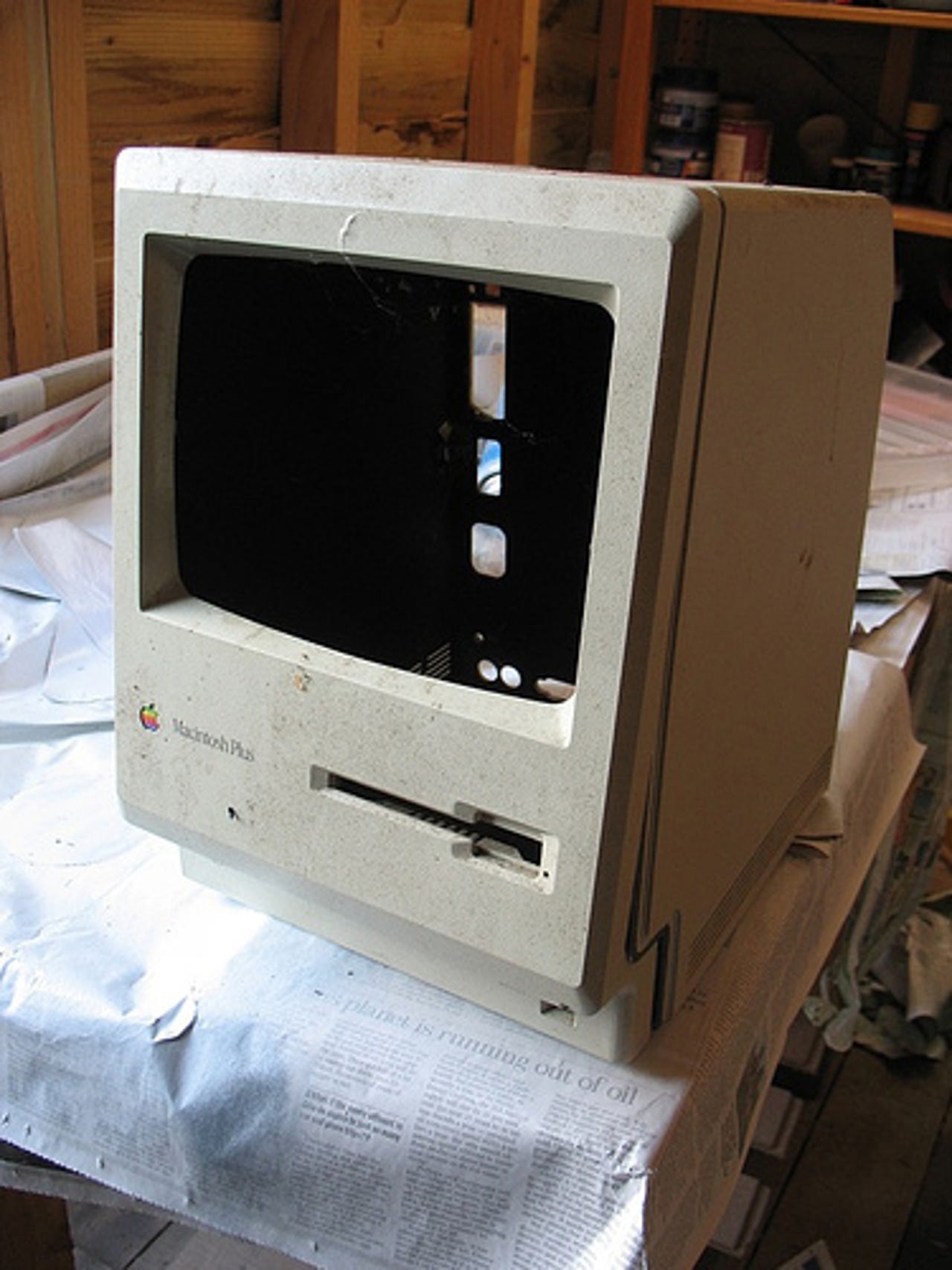Photos: Turning a Mac into an iPod speaker

iPod Hi-Fi mini
That's how Australian Simon Clement of Arawak Art Solutions opens up a photo essay on Flickr explaining both the how and the whys of his tinkering away at some old Macs to turn them into a pair of speakers for his iPod.
The iPod Hi-Fi, by comparison, is a unibody boom box put out by Apple Computer itself.
Classic Macs
Clement writes: "Have a look around and you'll find Classic Macs hiding away in all manner of places. Here are few in my shed where they've been waiting patiently for just such a moment. (The one in the top right corner spent some time as a MacAquarium). You'll need a bit of time and effort to get them apart but they're well made and ideally suited for the job."

Tips
Some helpful tips on how to proceed: "Once gutted, you're left with a reasonably solid case. The front plate pulls off pretty easily, but because you're going to want to be able to remove it without too much effort, spend some time cutting off some of the clips and plastic tabs."
More instructions
The instructions continue: "Now it's time to turn your attention to the interior. You'll need to hacksaw off the protruding recesses for the screws which project too close to the front of the case. (The plastic is soft and can be snipped or hand sawn off easily. Using a jigsaw helped but often I found the friction caused enough heat for the plastic to reseal after the saw had passed through). Notice that the names of the engineers and creators of the first Macs are embossed on the the inside of the case."
Calling in Quadra
Speaking of the Mac Classics, Clement wrote: "There are also a lot of holes and vents that need to be filled. (It may not look like it, but those are vents running along the top of the case)." So he enlisted some other old Apple gear to provide material: "This derelict Quadra case was used to provide most of the material for covering the gaps. It's made of much the same material so the texture remained uniform on the surface of the case. Glue gun and silicone sealed things airtight. And you do want it airtight if possible. Good way to check, and to remove any debris, is to fill the case up with water and check for leaks."
Audio
Now, the audio ingredients: "Ceiling speakers are ideal for this job as you don't pay any extra for a speaker case you don't need, and they're designed to fit into a recessed space with screws that pull down cleats on the rim of the ceiling opening. You're going to have to put something in for the cleats to grab hold onto but the speakers I found were a close fit right out of the box, and a little jig sawing and sanding was all that was required. The speakers themselves are screwed into the plastic surround, which means you can always update them down the track."
Class T Amp
For the system's amplifier, Clement turned to the Class T Amp from Sonic Impact Technologies. The battery-powered amp generates 15 watts per channel and weighs less than 1.5 pounds.
Interior
"The amp is standing on a a piece of plywood which is fixed to the bottom of the case. It's held in place by a strip of wood on either side and a metal clip. This means it can be easily removed when the batteries need replacing. A 12-volt transformer is plugged into an outlet fixed on the back of the case. A problem at the moment is that plugging the amp into the mains power source overrides the battery so you have to remove the speaker to switch from AC to DC. I'll have to work away around this at some point. In the meantime the battery life has been very good."
The on/off volume control has been removed and attached to the back of the Mac so the amp can be controlled from outside the case.
Painting
Clement: "Good-looking with grill on or off...." And a recommendation: "Don't skimp on your painting. Pay extra for appliance suitable paint and add 3 or 4 layers to give a real sheen and some moderate weather protection."
Payoff
The project caught the eye of folks on Slashdot, the news-for-nerds site. Some thought it wasn't nearly geeky enough, while others relished the cleverness.
A thumbs-down Slashdot post: "It gave me no clue of what he had done, except for hollowing out a old MAC, adding an amplifier and such...How did he interface to the iPod? Does the thing control the iPod, or just output the sound? I guess the latter, that it is just a fancy set of speakers with a 3.5mm jack to connect it to any portable equipment with a headset output. It's not really innovative even. What would have been innovative was if he'd made a interface to control the iPod."
And a thumbs-up Slashdot opinion: "This is a damn neat hack. Yes, it's probably not as high-quality audio as a set of pro-grade speakers costing hundreds of dollars, but you're listening to an iPod full of compressed, lossy songs, so stop whining. This is a fun way to recycle old hardware cases (unless you have some other pressing need for a Macplus case, perhaps?) into a piece of high geek-factor functional art."
Original iPod Hi-Fi
The original iPod Hi-Fi from Apple. If a build-your-own speaker system isn't something that works for you, there are a number of commercial speaker systems for the iPod.